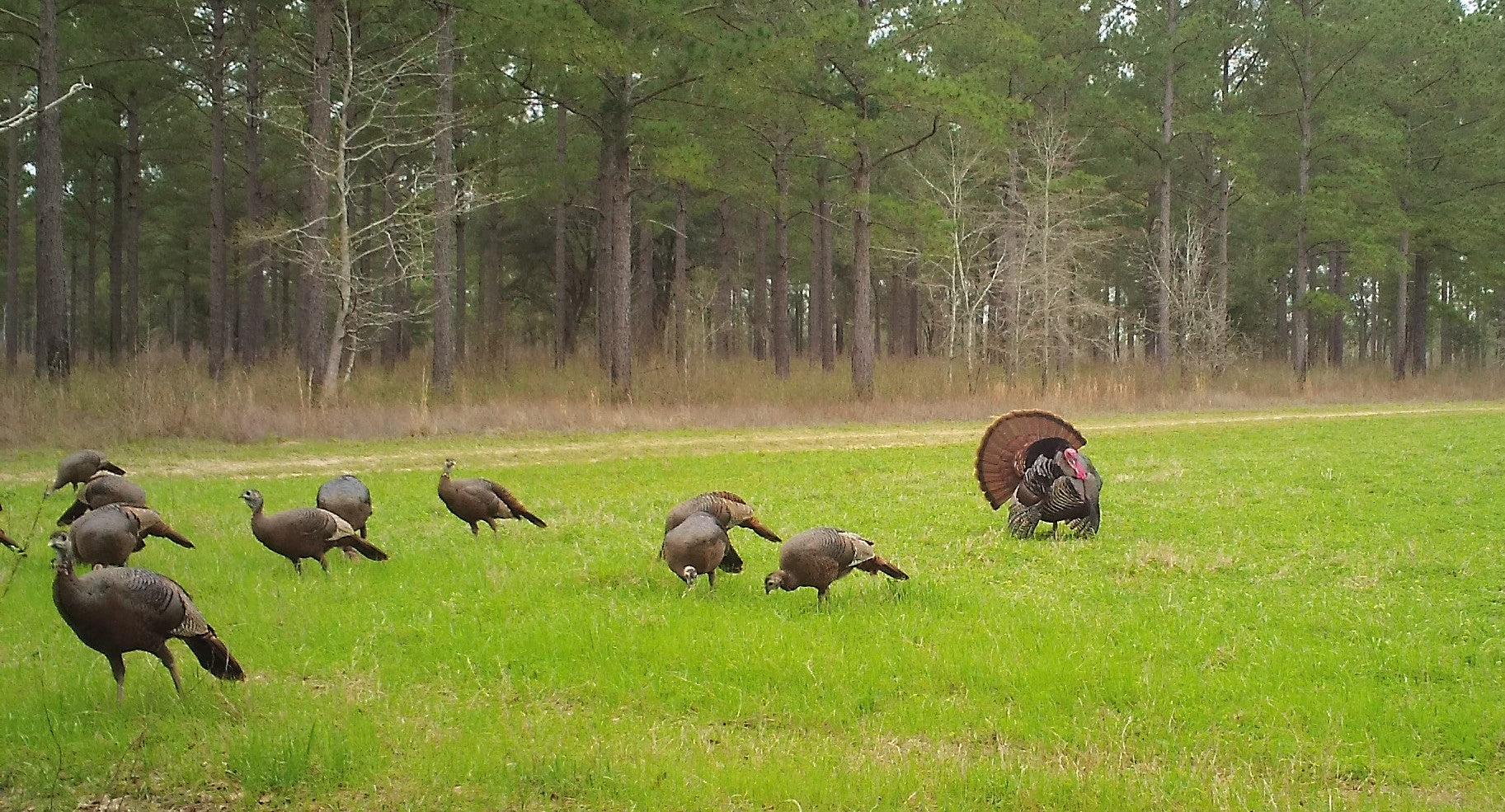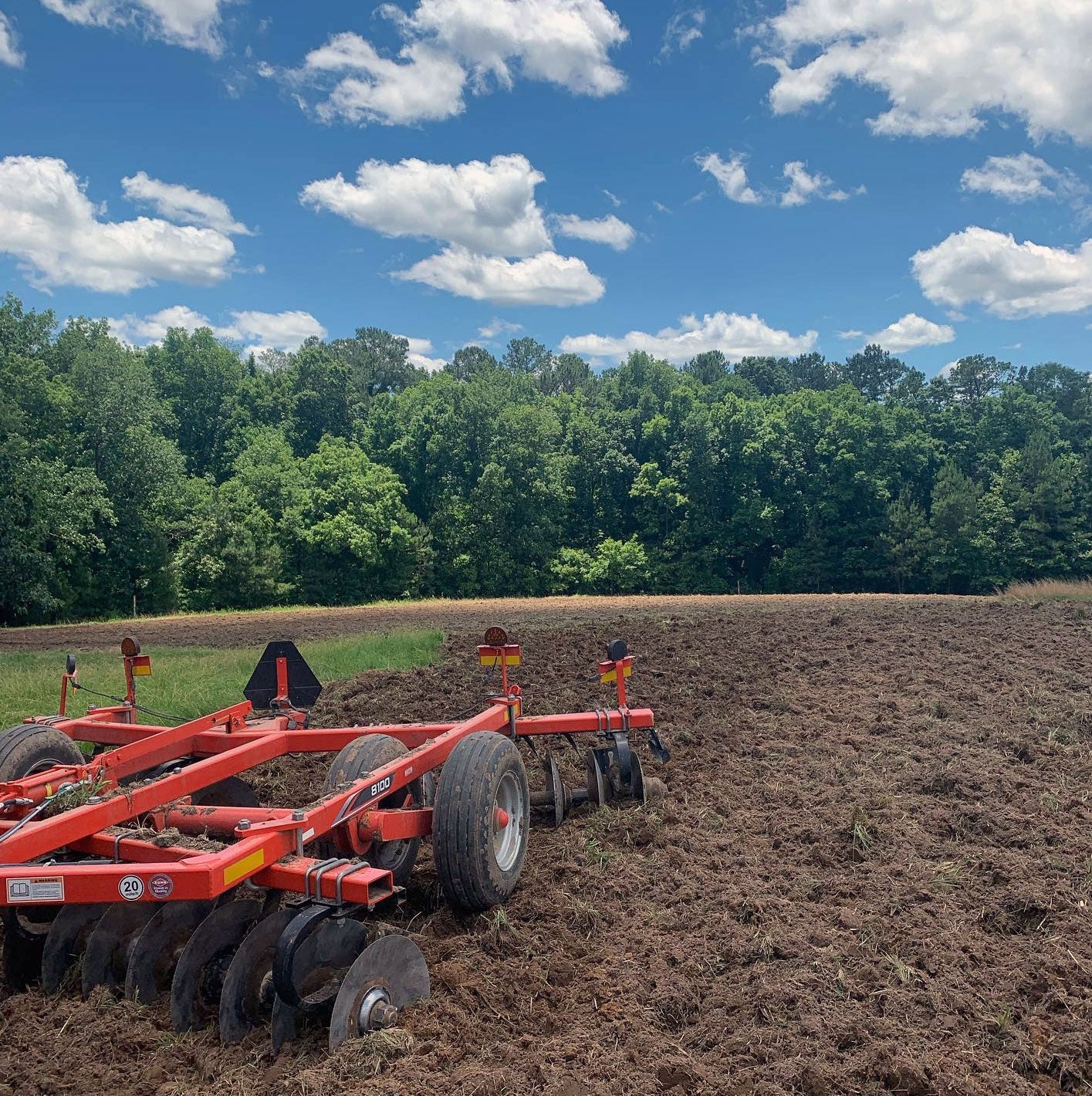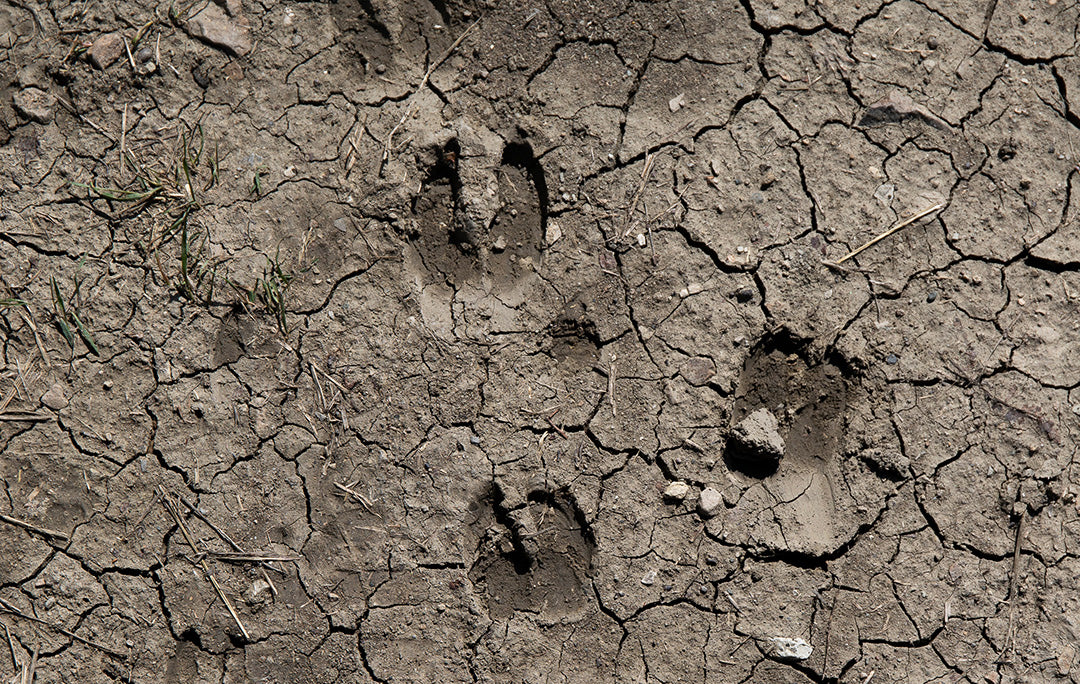A NEW METHOD TO SURVEY AND PHOTOGRAPH DEER ON YOUR PROPERTY
Would you like to know how many deer live on the property that you hunt or own? Deer biologists and managers have been surveying deer herds since the 1930's. The methods used to survey deer have changed and improved a great deal since this time.
A new deer survey method is now available that allows you to determine how many different bucks live on the property you hunt or own. This new method allows you to photograph each of these bucks so that you can later estimate their age and antler score. With this information you can also estimate the number of does and fawns on your property to determine how many total deer are present.
Why Is It Important To Survey Deer Herds?
In most states the DNR is mandated to monitor and manage their state’s deer herds. In order to do this efficiently and effectively, it is important to know as much as possible about the deer population. It is especially important to be able to estimate population size and determine the trend (increasing, decreasing, or stable) in the population so that proper harvest levels can be established for the upcoming hunting season.
Ideally, biologists would like to know the exact number of deer within their management areas. However, this is rarely possible with wild, free-ranging deer on large areas. Therefore, biologists count deer over a representative area and then extrapolate that number to the entire area. Even when measuring only a sample of the population on a smaller area, most survey methods still do not allow biologists to determine an exact number, so biologists rely on trends in the survey from year to year.
The composition of the deer herd is also important to determine. Biologists set the doe and antlerless harvests based partially on buck:doe ratios. Fawn:doe ratios are an important indication of the reproductive rate of the deer herd and of fawn survival. This ratio also provides critical information about the condition of the deer herd. For example, if fawn:doe ratios are very low, the deer population is probably too high and nutrition is being limited. If fawn:doe ratios are high, the deer herd is healthy and the population is likely low in relation to the nutritional level of the habitat.
Deer Survey Techniques
In the past, biologists have used many different methods to try to survey deer herds. In the 1930's, biologists first began surveying deer with the deer drive technique. This method is conducted by using as many as 125 volunteers to form a line and walk across the property being surveyed. Every deer that passes through the line to the right of each volunteer is counted. The count is then summed for all volunteers and the tally is the deer population estimate.
Due to drawbacks of the drive survey method, biologists began using track counts in the early 1950's. This method involves obliterating existing tracks along a pre-established route, usually a road, and then returning 24 hours later to count the number of new sets of deer tracks completely crossing the route.
In the 1950's, biologists also started using the spotlight technique as a method to survey deer and in the 1960’s; the aerial deer survey technique became popular using both the helicopter and plane. During the 1970's and 1980's, biologists began using computer models to estimate deer populations. These models are often based on harvest data from the previous year.
The spotlight and aerial techniques are probably the two most popular methods being used today, although biologists have also experimented with thermal infrared sensing and deer pellet counts as well. Very few of these methods are adequate for hunters and landowners to use for surveying deer herds on small properties. The aerial techniques are too expensive and are not effective in densely wooded areas. Aerial surveys done with planes also often do not allow biologists to discern age or sex of the animals.
The spotlight technique is affordable and can be used on small properties, but this technique also has several disadvantages. The biggest disadvantage is that deer cannot be counted in dense, brushy areas where they cannot be seen by the spotlight. Spotlight counts also result in biased sex and age ratio estimates because not all deer are equally observable. Biologists have learned that bucks are often sighted less frequently than they occur in the population. Until October and November, fawns are also sighted less frequently. In addition, the age and sex of many of the deer that are sighted cannot be determined. One study found that only 48 percent of the deer sighted could be identified. Biologists have also reported that spotlight counts may vary by hour of night, month, season, temperature, cloud cover, precipitation, dew, and relative humidity.
The Infrared-triggered Camera System
The infrared-triggered camera system is a new alternative to the above-mentioned survey methods. The camera system combines a digital camera with a passive infrared motion detector that senses “heat-in-motion” within a conical area. When a deer passes within the conical area, the motion trips the infrared detector. The motion detector then triggers the camera to focus, flash, and take a picture.
The camera can be programmed to imprint the day/hour/minute, or the day/month/year on the image. Most camera systems also allow you to choose between day-only, night-only, or 24-hour operation. You can also select a multitude of delay settings between successive exposures to reduce the chance of getting too many images of the same deer.
The infrared-triggered camera system offers several advantages over the spotlight census technique. The camera system can be positioned in dense, brushy areas to survey deer in these habitats. It is likely that deer are encountered at sex and age ratios more representative of the population because there is far less human intrusion. All deer encountered are photographed, so age and sex can be identified more accurately and more often. The camera system is likely less influenced by weather, hour of day, and season as well.
A Scientific Study Using Infrared-triggered Cameras
Wildlife biologists first began using this camera system to study animal behavior. Grant Woods studied deer scraping behavior using infrared-triggered cameras, as did David Gyunn, Jr., who studied buck-rubbing behavior. Harry Jacobson and Ben Koerth and their colleagues then tested the ability of the camera system for surveying white-tailed deer in Mississippi and Texas.
The Mississippi study was conducted at the 10,000-acre Longleaf Farms near the Gulf Coast during 1992-93. Longleaf Farms is a dense woodland habitat with over 90 percent of the area covered in pine trees and mixed hardwood trees. Fifty-six deer were captured (39 bucks, 17 does) and 50 were collared with radio transmitters. The remaining captured deer were marked with color-coded collars.
The researchers established 49 camera stations near the center of every other 40-acre block, amounting to a camera density of one camera for every 160 acres. The cameras were set at a photographic interval of four minutes. They then baited each station with about 20 pounds of shelled corn to attract deer to the camera station.
During the first years of the study, surveys were conducted for 14 consecutive days during February. Each camera station was visited daily to check the camera and to re-bait if necessary. The researchers then identified every different branch-antlered buck photographed during each survey, based on number of antler points and the size and shape of the rack, using an 8x magnifying glass and lamp. They also used body characteristics and traits to identify individual bucks as well. If they were not certain that a particular buck was unique, they excluded that image from the analysis.
After determining the number of different bucks photographed, the researchers were able to determine an estimate of the number of different does, fawns, and spike-antlered bucks photographed by calculating ratios of each from the images. To do this, they counted the total number of occurrences of branch-antlered bucks, spike-antlered bucks, does, and fawns photographed during each survey. They then determined the ratio of spike-antlered buck occurrences to occurrences of branch-antlered bucks. This same ratio was then used to determine the number of different spike-antlered bucks photographed based on the number of different branch-antlerled bucks photographed.
For example, if the images showed a total of 100 branch-antlered buck occurrences and 50 spike-antlered buck occurrences, the ratio of branch-antlered to spike-antlered would be 2:1. If they counted 30 different branch-antlered bucks out of the 100 occurrences, they would then calculate the number of spike-antlered bucks based on the 2:1 ratio to arrive at an estimate of 15 different spike-antlered bucks.
This same method was used to estimate the number of different does and fawns photographed as well. With this information, the researchers were then able to calculate buck:doe ratios, fawn:doe ratios, total population size, and number of acres per deer.
The researchers then tested the repeatability of their methods by having five different people count the number of different branch-antlered bucks identified in the same subset of 100 photographs. They found little difference in the numbers of different bucks these five people counted from the same photographs.
The number of different deer marked and radio collared on the study area provided the researchers with a known sample. They then determined the percentage of marked or radio-collared deer “recaptured” by the images during each survey. The first year, 29 of 30 (97 percent) different marked bucks and 1 of 1 (100 percent) marked does were photographed by the cameras. The second year, 22 of 23 (96 percent) different marked bucks and 8 of 11 (73 percent) marked does were photographed.
For some reason, does were less likely to be photographed at camera stations. This may be due to their smaller home range sizes versus bucks (buck home ranges are often twice as large as doe home ranges), or they may be less likely to visit bait stations. Does also are often less active within their home range as well.
The researchers concluded that at the very least, infrared-triggered cameras provide a method to determine the minimum number of adult (branch-antlered) bucks in the population. The cameras also provide information on the sex and age composition of the deer herd.
Additional Benefits Of The Infrared-triggered Camera Survey
I was able to estimate the ages and antler scores of each different buck photographed from a camera survey we conducted on our hunting property in southern Iowa. I estimated that 18 bucks were yearlings, ranging from 15-55 gross Boone and Crockett Club (BCC) points; 11 bucks were 2.5 years old, ranging in score from 115-140 BCC; 6 bucks were 3.5 years old, ranging in score from 140-155 BCC. Only one buck appeared to be older than 3.5 years, with an estimated score of 170 BCC.
Once gross BCC scores were estimated for each buck, these scores were tabulated by age class to determine an average BCC score for each age. In the future, we will be able to compare antler scores from year to year to determine if the harvest and management programs we have in place are successfully improving the deer herd. Buck:doe ratios and fawn:doe ratios can also be compared from year to year to determine if sex ratios and fawn production are improving each year.
In addition, I determined the number of deer that were photographed at night. Of the 1,112 deer occurrences in the photographs, 723 (65 percent) occurred at night. Antlered bucks were most likely to be photographed at night, with 103 of 134 (77 percent) buck occurrences at night. The majority of adult does were also photographed at night, with 463 of 696 (67 percent) doe occurrences at night. Buck fawns were least likely to be photographed at night, with 97 of 190 (51 percent) buck fawn occurrences at night.
This information cannot be collected with any other survey method in this much detail because each photograph can be examined repeatedly by more than one person. With this information, hunters and landowners can set their own harvest quotas based on their particular management goals. They can determine which bucks meet their particular harvest criteria if they are practicing quality or trophy management. They can determine how many does should be harvested to balance buck:doe ratios, or to reduce the population so that the deer herd is within the carrying capacity of the habitat. Hunters and landowners can also determine which bucks should be selectively harvested in an attempt to improve the antler genetics.
Infrared-triggered cameras can also be used to help hunters scout for particular bucks. By establishing cameras near hunting stands, hunters can determine if the bucks they are hunting are actually using that area, or if they are only visiting after nightfall. Hunters can also set up a camera at one stand site, while they hunt a different stand, to determine what deer visited the area while they were hunting elsewhere.
Infrared-triggered cameras can be used to scout and pattern deer without contaminating the area with human scent. The camera systems can be placed at scrapes, rubs, or trails to determine if deer are using these areas. The cameras can be placed at bait stations and food plots to see what deer are using these areas as well. The camera systems can also be placed to photograph other species.
Finally, the images from each survey can be used to market future hunts if the hunters or landowners conducting the photographic surveys are in the outfitting business. Images resulting from surveys conducted after the hunting season will indicate to potential clients what bucks will likely be available for harvest during the upcoming hunting season. In addition, individual bucks can often be identified from one annual survey to the next to determine what changes in antler size, shape, and BCC score occurred during the one-year interval.
Infrared-triggered cameras are the best method currently available for surveying deer herds in dense, woodland habitats of the Southeastern U.S., where other survey methods are inadequate. These cameras also provide individual landowners and hunters on relatively small properties with an affordable and accurate method of surveying the deer herds where they hunt. In the agricultural Midwest, these cameras are ideal for surveying deer herds because most timber lots are too small to justify the expense of conducting an aerial survey that will provide them with much less information than can be gathered with infrared-triggered cameras.
Infrared-triggered cameras will also likely revolutionize the hunting industry because of the potential amount of information that can be gathered by these cameras; because, as Jacobson concluded in his study, seeing is believing.
Posted by Dr. Mickey W. Hellickson











Leave a comment